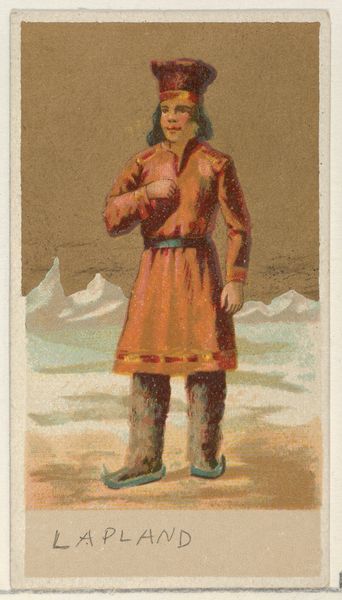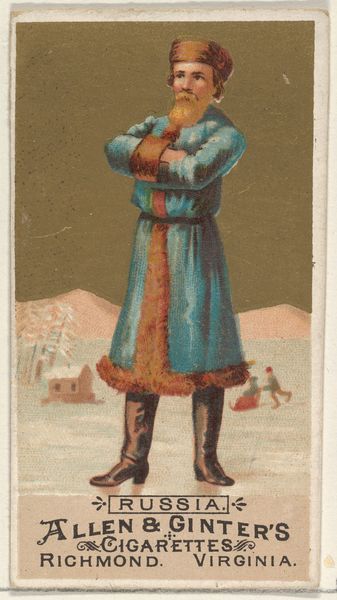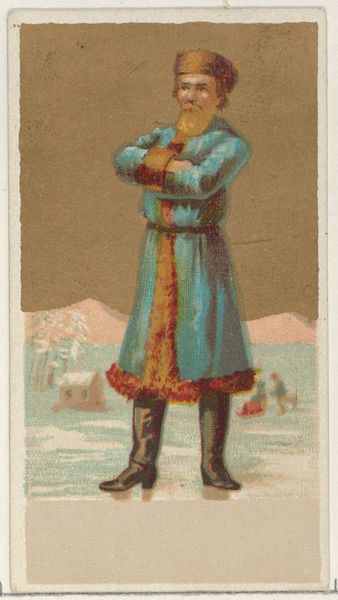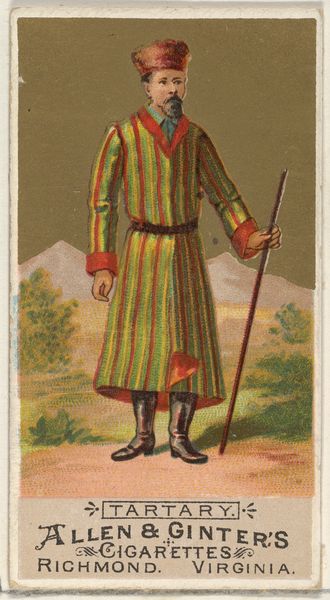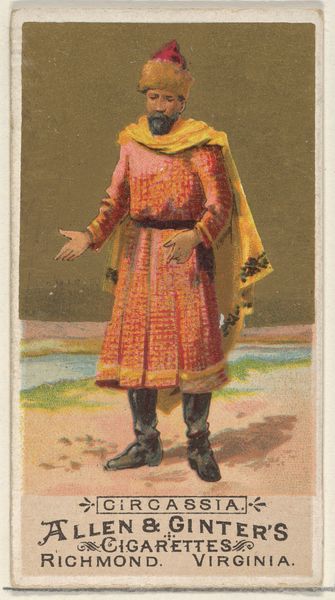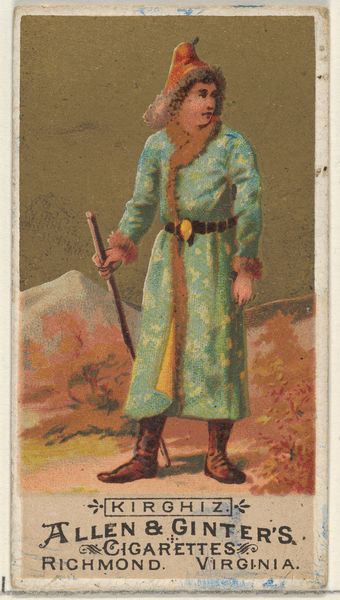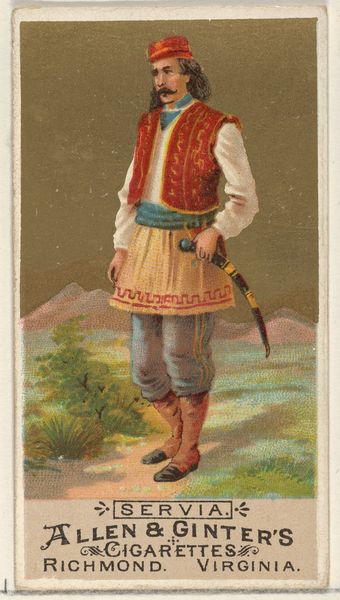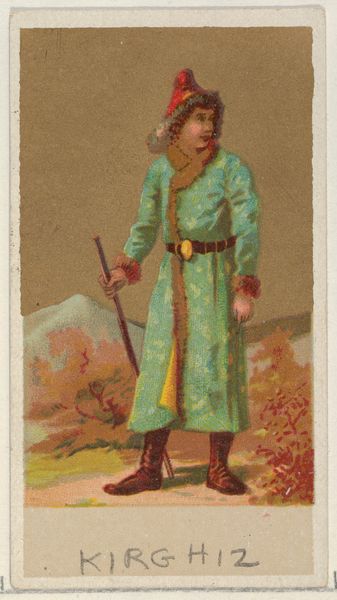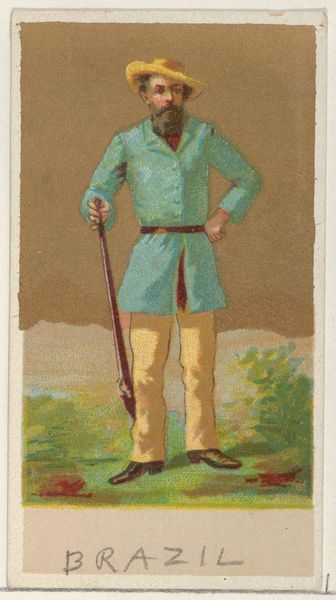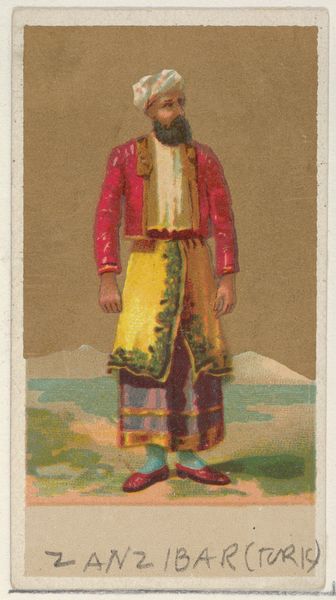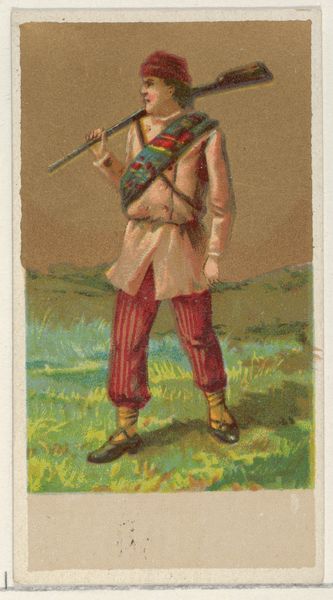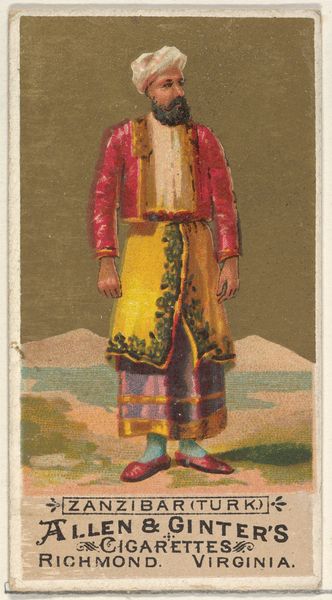
Lapland, from the Natives in Costume series (N16) for Allen & Ginter Cigarettes Brands 1886
0:00
0:00
#
portrait
# print
#
coloured pencil
Dimensions: Sheet: 2 3/4 x 1 1/2 in. (7 x 3.8 cm)
Copyright: Public Domain
Editor: Here we have "Lapland, from the Natives in Costume series" created in 1886 by Allen & Ginter, a striking drawing in coloured pencil and print. It has this odd quality of being both intimate and strangely distanced… How would you interpret this work, considering its context? Curator: Well, immediately I see a fascinating artifact of its time. It’s presented as a seemingly objective portrayal, but of course it comes with immense cultural baggage. This piece, intended as part of a series of collectible cards for cigarettes, served to both exoticize and package cultures from around the globe for mass consumption in the US. How might this card have shaped perceptions of “Lapland” at the time? Editor: I hadn't considered it in the context of commodity culture so directly. The "Natives in Costume" series seems like a blatant example of turning people into collectable objects. The composition feels deliberately staged, lacking any real sense of lived experience. Is that an intended part of it do you think? Curator: Absolutely. The "realism" is carefully constructed, likely based on existing imagery rather than direct observation. It contributes to the power dynamics inherent in colonialism. Consider the gaze – who is this portrait for? What power does the viewer implicitly hold? This commercial purpose completely reframes our view. Editor: It’s unsettling to think about its original use. Looking at the card now, understanding the commercial motives and inherent power imbalances shifts my entire perspective. It highlights the complex and often problematic ways cultures have been represented and consumed through art. Curator: Precisely. It makes you question the motivations behind even seemingly innocent portrayals and how our understanding is shaped by the forces of production and consumption, even within art.
Comments
No comments
Be the first to comment and join the conversation on the ultimate creative platform.
